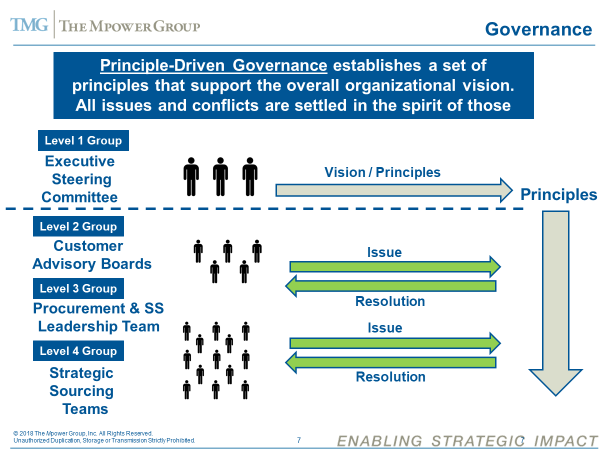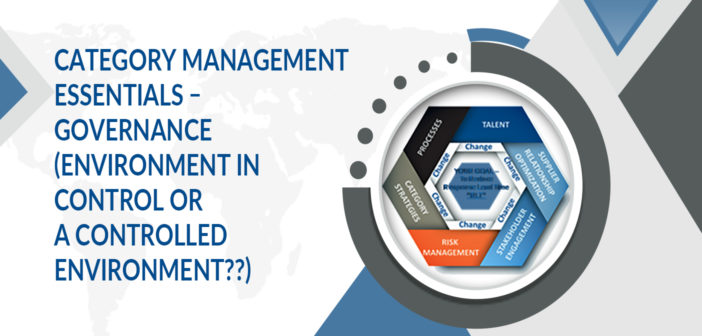Governance is something I’ve been struggling with on a client engagement and I thought sharing it with you might help me organize my thoughts. The client is enjoying very fast inorganic growth and is now a $110bn organization having just almost doubled recently but coming from a highly decentralized culture. Therefore, the “infrastructure” of managing (decision making, oversight, culture integration, etc., etc.) in that situation is severely hampered and naturally has a long lag time. This is a Predictable and Inevitable occurrence.
Trying to introduce the term Governance has been a losing proposition even though we’ve tried to convince them that Governance ultimately boils down to one key goal: Increasing Decision Velocity, Quality and Adoption. They WILL make decisions faster; they WILL be better decisions and they WILL have significantly higher rates of adoption. That assumes that you have a Governance model that is designed to deliver that goal and has the following characteristics:
- Participation in key decision making
- A forum for issues for the rest of organization
- Organizational barriers are removed
- Guidance is provided to the teams where needed
- Cross BU alignment / collaboration / adoption
- Representation of major stakeholder organizations
There are many more to list here but I picked these to illustrate that Governance is not about establishing more control and oversight, but there is a way to achieve more control and oversight. The former is controlling the organization (an impossible task) or trying to achieve an organization in control.
Let me ask a simple question – How can an Executive Team establish any kind of oversight and control over the decisions that a sourcing team is making with multiple organizational layers in between? One way would be to have their decisions be reviewed by the Executive Team which is clearly dysfunctional. The other would be to change the objective of Governance to going for an organization in control. Our approach recommends that the Executive team essentially replicate their oversight or control filter to increase their reach – multiply their oversight and control capability. At it’s most simplistic explanation, it involves each layer of the Governance establishing a set of Principles ( different than the typical corporate principles around integrity, community etc.) that replicate and extend the same exact criteria or filters that they would use, if they were in the room participating. It’s like we’ve created an avatar to represent them at each meeting – the CEO is making sourcing decisions!!!

The added but extremely critical benefit is that issues that typically would travel up the organizational chain are dealt with at the appropriate level because the avatar (Principles) is in the room to resolve those issue just as if the “CEO” was there. Again, I’m over-simplifying a well-structured process needed to get it done, but it is way, way worth more than the effort – it’s priceless.
 The logic is simple – the problems that occur in every organization are all related to boundary management – the boundaries (the blue arrows in the above picture) between the boxes or organization charts. And we all like to think that we have unlimited units of effort related to oversight and control – we don’t. Principles are a very powerful and effective solution to the boundary management issues.
The logic is simple – the problems that occur in every organization are all related to boundary management – the boundaries (the blue arrows in the above picture) between the boxes or organization charts. And we all like to think that we have unlimited units of effort related to oversight and control – we don’t. Principles are a very powerful and effective solution to the boundary management issues.
So, forget the word Governance given the negative connotations associated with it. This is all about Extending Control and Oversight (ECO following the consulting rule of three letter acronyms 😊)! It turns out that if you want maximum oversight and control, you need to figure out how to have your avatar(Principles) be where you can’t be. Please be safe.

